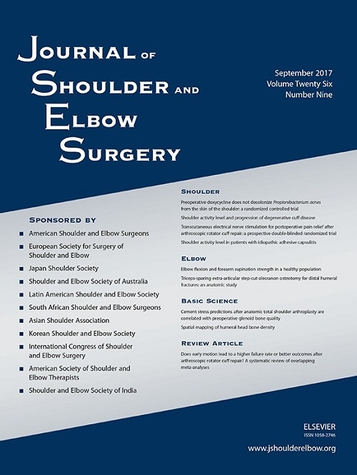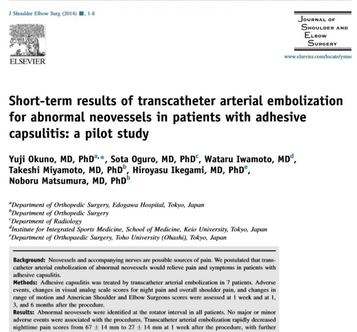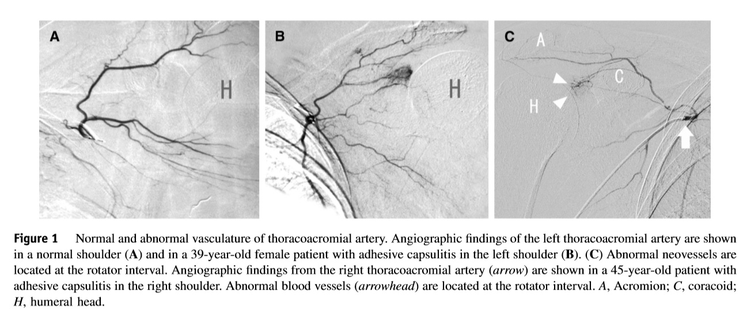The first report of transcatheter artery embolization of frozen shoulder
Published: March 12th, 2014
Title: Short-term results of transcatheter arterial embolization for abnormal neovessels in patients with adhesive capsulitis: a pilot study


We have been performing transcatheter artery embolization for patients with frozen shoulder since 2012.
The first report was submitted in 2014 to Journal of Shoulder and Elbow Surgery, a popular medical journal ready by shoulder and elbow physicians over the world.
This is a completely new treatment, so it is not possible to treat a lot of people all of sudden.
In this report, 7 patients were treated and observed for six months after the treatment.
For those who have tried a variety of treatments and have not been cured, we suggested this new treatment and examined whether this is effective enough or not for them, of course with high level of safety.
This type of study is called a pilot study as it may lead the following studies.
When I published this research paper, I received some questions like “Is this really effective?” (this always happens in a part of new treatment development)
However, now I receive many reports of this treatment not only from domestic, but also from overseas that they confirmed that this treatment is effective.
From 2016 to 2017, there were more than 100 patients suffering from frozen shoulder had the transcatheter artery embolization in four hospitals in Japan including a university hospital.
The paper presented here was the starting point for this new movement.

When I published this research paper, I received some questions like “Is this really effective?” (this always happens in a part of new treatment development)
However, now I receive many reports of this treatment not only from domestic, but also from overseas that they confirmed that this treatment is effective.
From 2016 to 2017, there were more than 100 patients suffering from frozen shoulder had the transcatheter artery embolization in four hospitals in Japan including a university hospital.
The paper presented here was the starting point for this new movement.